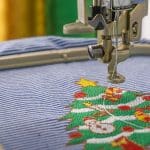When it’s time to wind down, many kids with autism often face unique challenges with sleep. Difficulty falling asleep, staying asleep, or maintaining a consistent routine can take a toll on their well-being and yours. Fortunately, there are practical strategies that can turn sleepless nights into restful ones. Continue reading to explore ways to help your child with autism sleep better.
The Connection Between Autism and Sleep Issues
Children with autism are more likely to experience sleep disturbances due to factors such as sensory sensitivities, anxiety, or irregular melatonin production. Understanding these potential causes is the first step toward finding the right solution. Awareness equips you to address their sleep challenges with more compassion and targeted strategies.
Create a Consistent Sleep Schedule
Consistency is key when it comes to bedtime routines. Set a regular bedtime and wake-up time, even on weekends. The repetition helps regulate the body’s internal clock. Pair the routine with calming activities like reading or a warm bath to signal that it’s time to settle in for the night.
Optimize the Sleep Environment
The environment where your child sleeps can make all the difference. Focus on creating a calm, quiet, and cozy space. Use blackout curtains to block out light and consider a white noise machine to mask any sounds that might disturb their slumber. Make sure the bed is comfortable and free of overstimulating textures.
Consider Dietary Changes
Sometimes, changes to a child’s diet can influence how well they sleep. Avoid caffeine and sugary foods in the evening, as these can make it harder for them to relax. Some parents find that a balanced diet with proper nutrients can have a noticeable impact on their child’s overall sleep quality.
Explore Sensory Strategies
Many kids with autism respond positively to sensory-based sleep aids. Weighted blankets, for example, can provide a calming effect and help with relaxation. Certain essential oils, such as lavender, might also promote a soothing atmosphere. Try experimenting to find out what works best for your child’s unique needs.
Try Relaxation Techniques
Relaxation exercises before bed can help ease anxiety or pent-up energy. Deep breathing, gentle stretching, or even listening to soft music can create a peaceful transition from a busy day to a restful night. These approaches don’t just relax your child but can also benefit you.
Consult With Healthcare Professionals
If sleep issues persist, reaching out to a healthcare professional can provide valuable insights. A pediatrician or sleep specialist may suggest therapies or provide guidance on interventions that address underlying causes. For instance, ABA therapy can help with sleep issues. The therapist can identify sleep barriers and develop a personalized sleep plan for your child.
Utilize Assistive Technologies
There’s an array of assistive technologies designed to support better sleep. Alarm clocks with visual cues, apps that guide relaxation, or devices that track sleep cycles can help you identify patterns and optimize bedtime routines. Using technology effectively can make nights less challenging.
Monitor and Track Sleep Patterns
Keeping a sleep journal can pinpoint issues and reveal what works. Record when your child falls asleep, how often they wake, and any triggers that may affect their rest. Over time, you’ll identify trends that help you fine-tune your child’s sleep plan.
Helping children with autism develop better sleep habits may not happen overnight, but taking small, consistent steps can make a meaningful difference. If you’re ready to take more action, explore how experts and therapies can work alongside your efforts to support your child’s well-being starting today. Use these tried and true ways to help your child with autism sleep better
Recommended reading: 6 Tips for Improving Your Quality of Sleep















